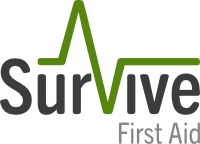ANZCOR 9.4.6 – Blue-Ringed Octopus and Cone Shell

ANZCOR Guideline 9.4.6 ENVENOMATION - BLUE-RINGED OCTOPUS AND CONE SHELL
INTRODUCTION
Blue-ringed octopuses (Hapalochlaena spp) inhabit all Australian coastal waters and are often found in tidal pools. If handled, these small animals may inflict a potentially fatal bite, injecting venom stored in salivary glands.
Many species of cone shell (Conus spp) are found in tropical waters. They fire a dart-like barb to deliver venom when handled.
Although different, venoms from both these creatures can cause paralysis and death from respiratory failure within 30 minutes. This can be treated with Basic Life Support.
RECOGNITION
Symptoms and signs may include:
- a painless bite: a spot of blood visible
- numbness of lips and tongue
- the progressive weakness of muscles of respiration leading to inadequate or cessation of breathing.
MANAGEMENT
- Call an ambulance
- Keep the victim at rest, reassured and under constant observation.
- Use the Pressure Immobilisation Technique Guideline 9.4.8 if possible (Class B, Expert Consensus Opinion)
- Transport the victim to a medical facility, preferably by ambulance.
If the victim is unresponsive and not breathing normally, follow ANZCOR Guideline 8: Cardiopulmonary Resuscitation.
NOTE: Despite being unable to move, the victim may be able to hear spoken comments.
AUSTRALIAN VENOM RESEARCH UNIT
For urgent advice concerning any marine envenomation, call the Australian Venom Research Unit 24 hour advisory line. 1300 760 451
FURTHER READING
ANZCOR Guideline 6: Compressions
ANZCOR Guideline 8: Cardiopulmonary Resuscitation
ANZCOR Guideline 9.4.8 Envenomation - Pressure Immobilisation Technique
RATIONALE
Following envenomation by either the blue ringed octopus or cone shell, prompt application of the Pressure Immobilisation Technique will trap most of the venom at the bite site. When absorbed, the venoms cause muscle paralysis leading to breathing failure without direct effects on the heart. Paralysis my be long lasting (hours) and cardiopulmonary resuscitation must be continued until the patient is in the care of a health professional.
